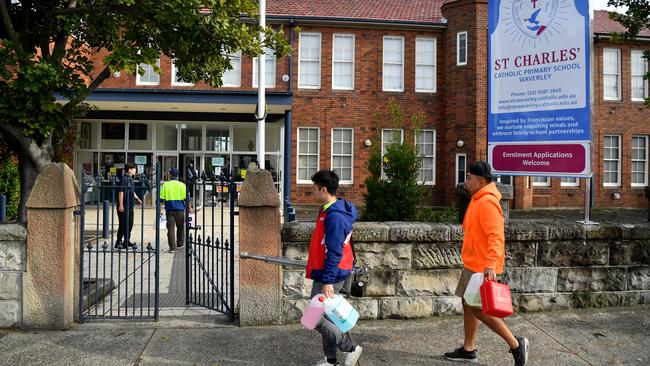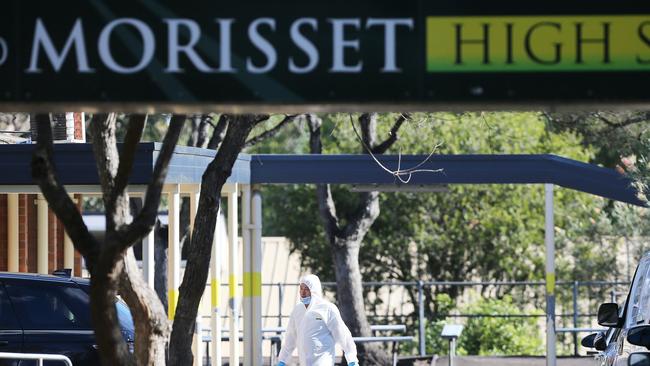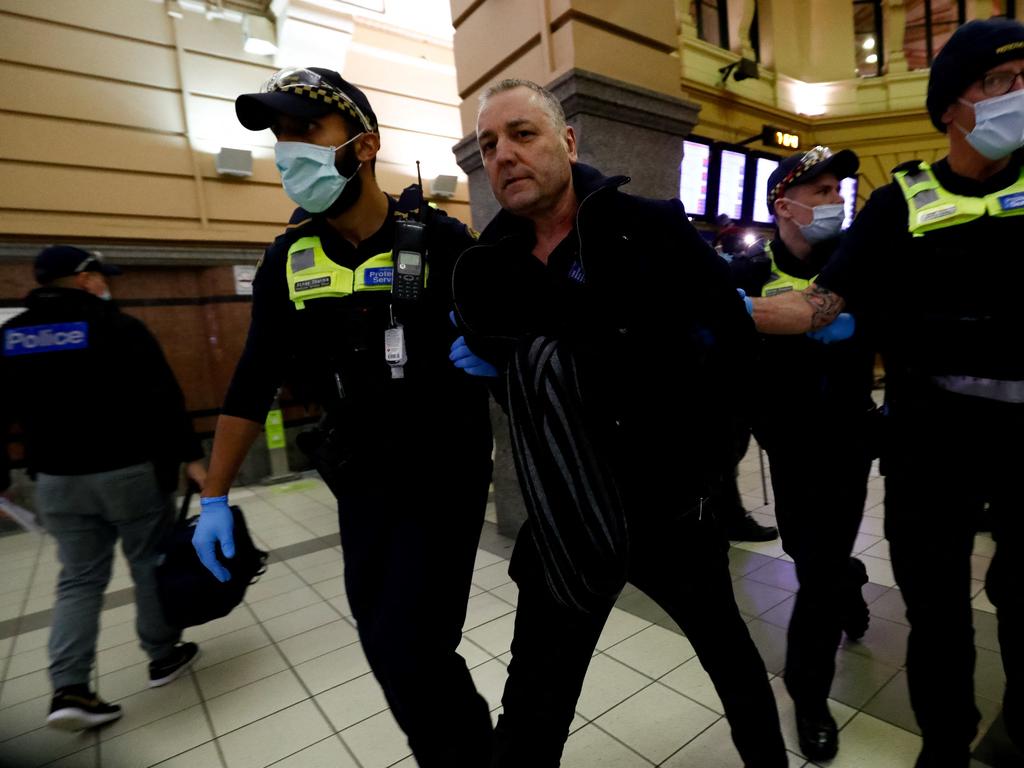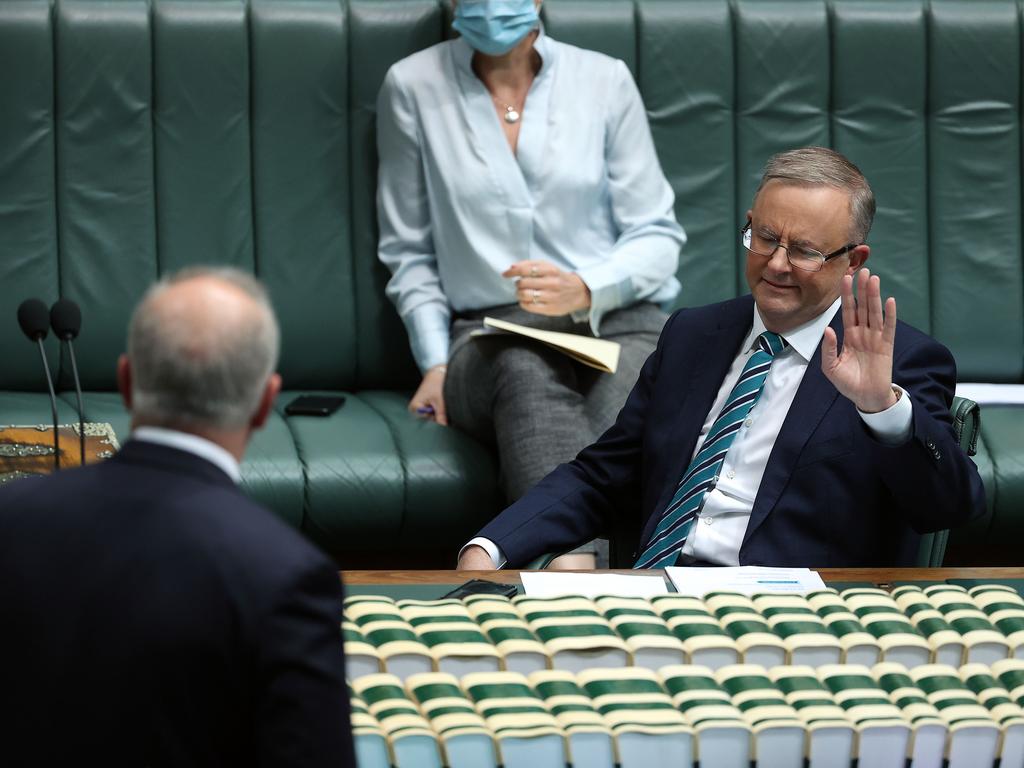Students are suffering as school gates remain shut
Child health experts want a nuanced approach, but teachers say reopening is simply not safe.

Across the US, schools have begun tentatively reopening their doors after a long northern summer vacation filled with equal smatterings of hope and reservation.
The coming weeks will mark the first time many students have stepped inside a physical classroom, interacting face-to-face with their teachers and friends, for almost a year, after the nation experienced some of the longest stretches of school shutdowns – more than 50 weeks in some states – due to strict pandemic lockdown orders.
While coronavirus infections are down significantly compared to last year’s peak, numbers are climbing again. And although vaccinations rates are also on the rise, there are mounting concerns about the return to school after the US Centers for Disease Control and Prevention recently described the emergent Delta variant of the virus as being “as transmissible as chickenpox”.
In Australia, school communities have been at the epicentre of recent outbreaks.
Staff development days at Bacchus Marsh Grammar, on Melbourne’s western fringe, and Trinity Grammar, in the eastern suburbs, kicked off the infection of dozens of teachers, students and family members, spreading 90km away to the seaside town of Barwon Heads, where the local primary school was forced to close.
In Sydney this week, where schools have been closed since the start of term three, concern over the state government’s original push to return all HSC students to class saw the NSW Teachers Federation and Independent Education Union join forces to denounce the proposal, slamming it as “dangerous, unsafe and unwise”.
The two unions don’t typically act in concert – one represents government school employees while the other acts in the interests of the private sector – and IEU NSW-ACT branch secretary Mark Northam says the historic action has been sparked by unprecedented concern among the teaching profession.
“I think this time around, this Delta variant has been weighing heavily on people’s minds,” he says. “It’s pretty obvious that even without being a medical expert, kids can catch it and they can transmit it.”
In the middle of last year, when Victoria was recording hundreds of cases per day, schools did not play a major role in community transmission and concerns children may bring infections home to vulnerable family were large unfounded.
However, the latest transmission data suggests this is may no longer be the case.
In Queensland, health officials have revealed that more than half of those infected are aged 19 or younger. And the trend towards the infection of young people is confirmed in the federal health department’s latest Covid-19 epidemiology report, which reveals that, in the fortnight to July 18, the largest proportion of new cases occurred in those aged from 20 to 29 years, at 24 per cent.

The severity of the disease, however, appears to be declining. So far this year, the estimated proportion of cases hospitalised has been 9.9 per cent, compared to 13 per cent last September.The case fatality rate – as high as 3.1 per cent last September – has fallen to 0.2 per cent. (That figure, however, predates this month’s deaths recorded in NSW).
Paediatrician Professor Fiona Russell of the Murdoch Children’s Research Institute believes it is too early to say categorically whether the Delta strain is more, or less, severe than earlier variants of the coronavirus.
However, it is clearly infecting more young people, Russell says, partly due to vaccination rates rising among older, priority cohorts of the population.
“It is so highly infectious; every person who gets infected will, on average, go on to infect six other people,” she says. “So there will be infections in schools and in childcare, and (any) settings where people have a high frequency of contact with others.”
The Murdoch Children’s Research Institute was instrumental in campaigning for Victorian schools to reopen for face-to-face learning last year, with its research finding that coronavirus cases associated with schools accounted for just 8 per cent of all cases in Victoria.
It found that school and childcare outbreaks were far more likely in areas where the virus was prevalent, suggesting that it was community transmission that drives Covid-19 spread in schools, not the other way around.
The institute has maintained its position on the importance of schooling for young people’s health and wellbeing and wants to see a shift away from the blunt strategy of closing schools down any time there’s an outbreak.
Professor Sharon Goldfeld, also of the institute, points to a survey released last month by the Victorian Commission for Children and Young People that highlighted a dramatic decline in young people’s mental health following the state’s fourth lockdown earlier this year.
One of the respondents likened the experience of repeated lockdowns as being “on fire while people with hoses are standing and just watching”. Another, a 12-year-old, said: “I feel like someone can lock me down from my school and friends in a second.”

“Clearly, with each lockdown kids get more concerned and parents become more stressed,” Goldfeld says. “It is wearying for everyone.” She believes it is time to consider the impacts of the coronavirus mitigation strategy on young people and take a more nuanced approach.
“I get the need to keep the population safe but at the same time we need to consider whether we can keep children’s needs at the centre,” she says. “And I think we can.”
On Friday, NSW dumped its initial plan to get all HSC students back to class, confirming that those who live or study in the seven local government areas with the highest rates of infections would continue to learn from home for the foreseeable future.
Under its new “flexible” proposal, schools in other parts of Greater Sydney will be permitted to have small groups of HSC students on-site for essential classes, check-ins with teachers and for wellbeing purposes “where necessary”. However, there will be no return to full-time classes.
“No student will attend a school site for more than two hours per day and is not expected to attend school five days per week,” according to education department guidance.
“All timetabling of on-site activities must limit time spent on-site and mingling of … students, with interactions between groups on-site minimised.
“Students who need to attend on site should be spaced across classrooms, or buildings, separate from other student cohorts and should not move between different groups or classrooms on the one day. Similarly, teaching and non-teaching staff must not mingle,” the guidance states.
For students of Canterbury Girls High School, not much will change following the announcement given that it is based in one of the city’s hotspots.
“We’d already taken a decision a little while ago to move the HSC assessments online, taking into account the wellbeing and safety of students and staff,” says principal Belinda Conway.
“I think everyone accepts that we’re in a pandemic and our message to students has been to focus on what we can control, taking care of wellbeing and also providing the best teaching and learning experience that we can deliver.”
The school, which has almost 800 students, of which 114 are studying for the HSC, has tried to keep its remote learning timetable similar to a typical school day. In addition to classes, there has been a focus on wellbeing support and fun activities, such as an online “dance-a-thon” held every Friday.
Conway believes students have generally coped well with the transition, “We’ve been here before,” she says. “Everyone has a familiarity with online learning.”
The unions and the Catholic school sector, which had also harboured reservations about bringing year 12s back, have cautiously welcomed the revised proposal.
“Sanity has prevailed,” NSW Teachers Federation president Angelos Gavrielatos said, adding that the state’s rising case numbers confirmed that the original plan “defied logic”.
According to Russell, Sydney schools can start to invite students back on campus without posing an unnecessary health or safety risk.
“There are things that can be done, like staggering students to reduce density, opening windows, keeping doors open, ventilation, masks, hand hygiene, no singing, no sports,” she says.
“Encouraging kids to walk to school, or ride or get dropped off by a parent so they can avoid public transport. But obviously the key is vaccinating staff.”
Parents of school-age children should also go out and get vaccinated as soon as they are able, urges Russell, pointing out that households continue to be the No.1 site of transmission.
“School closures harm children,” she says.
“Those adults who are not getting vaccinated, who are ‘waiting for Pfizer’, really need to consider that doing so is harming our children.”







To join the conversation, please log in. Don't have an account? Register
Join the conversation, you are commenting as Logout